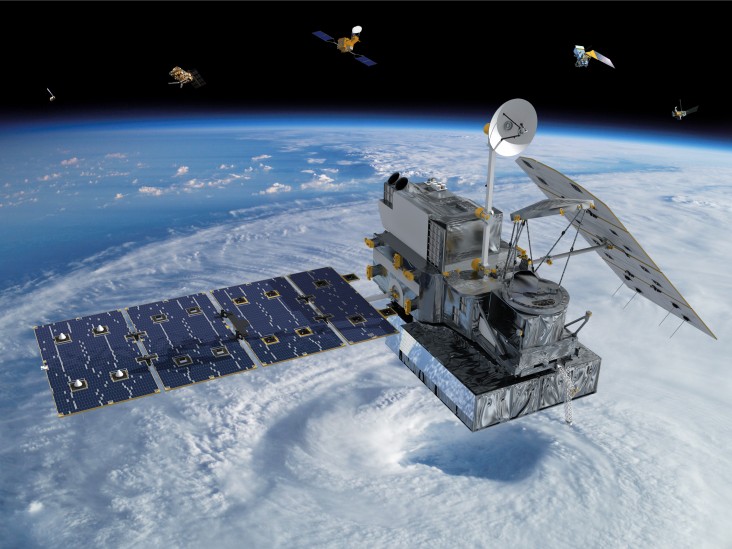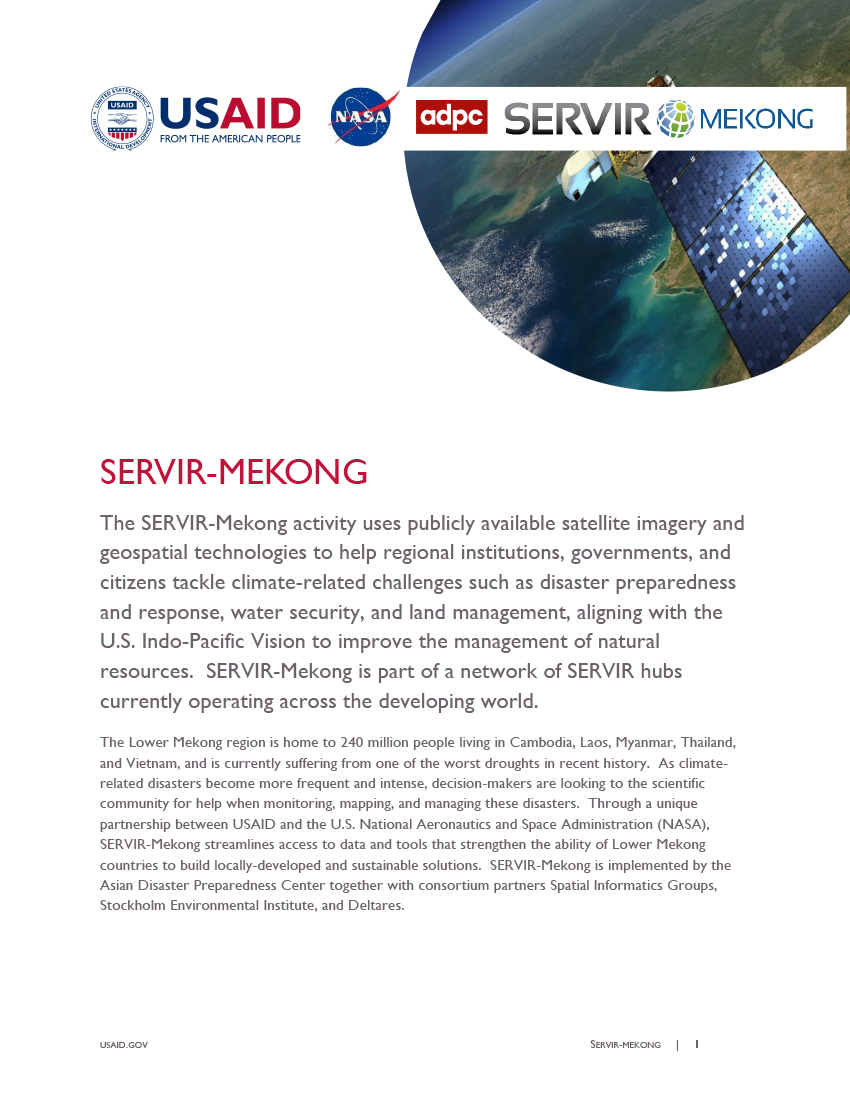Speeches Shim

The SERVIR-Mekong activity uses publicly available satellite imagery and geospatial technologies to help regional institutions, governments, and citizens tackle climate-related challenges such as disaster preparedness and response, water security, and land management, aligning with the U.S. Indo-Pacific Vision to improve the management of natural resources. SERVIR-Mekong is part of a network of SERVIR hubs currently operating across the developing world.
The Lower Mekong region is home to 240 million people living in Cambodia, Laos, Myanmar, Thailand, and Vietnam, and is currently suffering from one of the worst droughts in recent history. As climate-related disasters become more frequent and intense, decision-makers are looking to the scientific community for help when monitoring, mapping, and managing these disasters. Through a unique partnership between USAID and the U.S. National Aeronautics and Space Administration (NASA), SERVIR-Mekong streamlines access to data and tools that strengthen the ability of Lower Mekong countries to build locally-developed and sustainable solutions. SERVIR-Mekong is implemented by the Asian Disaster Preparedness Center together with consortium partners Spatial Informatics Groups, Stockholm Environmental Institute, and Deltares.
SHARING GEOSPATIAL TECHNOLOGIES AND EXPERTISE
In partnership with NASA, regional organizations, and other SERVIR hubs, SERVIR-Mekong addresses information gaps including improving drought and flood forecasting using customized data, decision-tools, and best practice guides. With support from SERVIR-Mekong, decision-makers can apply science and technology to manage environmental resources and improve disaster resilience and response.
ENGAGING THE REGION
As a demand-driven program, SERVIR-Mekong conducts periodic needs assessments to understand the region’s current priorities, challenges, and opportunities for targeted technical assistance.
SERVIR-Mekong developed an online form at servir.adpc.net that allows local governments, the private sector, and universities to request direct technical support and training to access and analyze geospatial data.
IMPACTS AND RESULTS
SERVIR-Mekong launched a series of regional tools and services to support the Lower Mekong region to manage environmental risk:
SERVIR-Mekong ![]() (pdf - 251k)
(pdf - 251k)
Enhancing Drought Resilience and Crop Yield Security in the Lower Mekong: The Mekong River Commission’s (MRC) Drought Monitoring and Forecasting portal, endorsed by MRC’s member countries, includes data from SERVIR-Mekong’s drought monitoring tool. The system provides users in the Lower Mekong region, including the agricultural and water resource sectors, with real-time and seasonal drought forecasting data to lessen the impact of drought on people’s crop yield and food security.
Improving Regional Land Cover Monitoring using Satellite Data: The Regional Land Cover Monitoring System is a tool that uses an innovative cloud-based, remote sensing approach (operated by Google Earth Engine) to produce high-quality maps across the Lower Mekong region that improve crop mapping and land management. Regional land cover maps from the tool were featured in the State of Land in the Mekong Region report, the first publication of its kind that presents the current status of, and changes in, land resources, their social distribution, and the conditions of governance that shape them.
Supporting Better Flood Forecasting and Early Warning in the Lower Mekong: SERVIR-Mekong and the MRC’s Regional Flood and Drought Management Centre co-developed a satellite-based rainfall calibration tool to improve flood forecasting and early warning systems in the Lower Mekong River Basin.
CONTACT INFORMATION
For more information, please visit servir.adpc.net or servir-contact@adpc.net


Comment
Make a general inquiry or suggest an improvement.